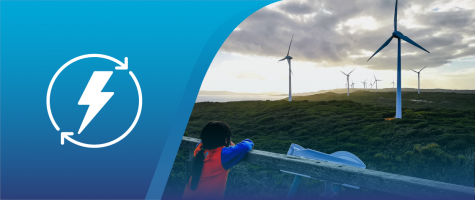Around 1 in 3 households in WA have solar power systems on their roofs. In 2020 alone, more than 300 megawatts of residential solar power were added in WA, which is almost equivalent to the annual output of the state’s largest coal-fired power station.
Strategic justification
As more renewable energy resources are added to the network, it will increasingly transform from a traditional linear system to one that is further decentralised. A rapidly changing energy sector requires modified frameworks, infrastructure and regulations as the state continues to plan for a more sustainable, reliable and cost-effective energy system. Considering the speed of change in this area, the WA Government should continue to prioritise proactive transition to renewable energy solutions.
Sector challenges and opportunities
Generating energy from zero-emission sources will reduce the dependency on fossil fuels and greatly assist the state’s transition to net zero emissions by 2050. The energy sector presents a significant opportunity to progress early achievements in emissions reduction, compared to other sectors where progress may take longer.
While advancing renewables is enabling the transition to net zero carbon emissions, it comes at a cost to large-scale infrastructure which was developed in a different era. Coal-fired power generation is becoming more challenging to operate as it needs to run at a minimum level of service to ensure stable supply. The state has already commenced the transition away from coal-fired power. Further consideration may need to be given to the retirement of remaining coal-fired power sources, particularly in light of the Glasgow Pact.
Although renewable energy provides opportunities for lower-cost generation and a less emission-intensive energy network, there are challenges with the intermittent nature of the generation, which can impact system reliability and security. Energy storage is a key requirement of reliable renewable energy supply. However, the current cost is a barrier and further advances in energy storage are emerging. While gas-fired power is used as a transition fuel in the medium term, longer-term reliance on gas will mean the state will find it harder to achieve emission reduction targets.
WA has 2 main energy systems – the South West Interconnect System (SWIS) and the North West Interconnected System (NWIS) – and many more isolated energy systems throughout the state. The SWIS is an interconnected electricity system in the south-western part of the state. Due to its isolation, the SWIS cannot receive electricity from neighbouring states, unlike the National Electricity Market for the east coast of Australia. The NWIS is in the Pilbara region and includes a number of variously owned interconnected electricity networks. There are unique challenges in the NWIS, including large distances and high associated costs of energy network connections. Despite its name, energy infrastructure ownership is often fragmented, and operations lack coordination, with the primary energy users – the minerals, oil and gas industries – largely seeking self-sufficient power supply.
Renewable hydrogen is emerging as an energy option that can provide energy storage and stabilise energy grids, decarbonise industries and accelerate the green energy economy.
Technological change and emissions reduction policy are having (and will continue to have) a significant impact on WA’s energy system and regulation. Energy Policy WA is progressively amending regulatory instruments in line with changes to the external environment. However, regulation and legislation changes can be resource intensive and lengthy. Ensuring regulation keeps pace with energy transformation and government policy is a continuing challenge.

